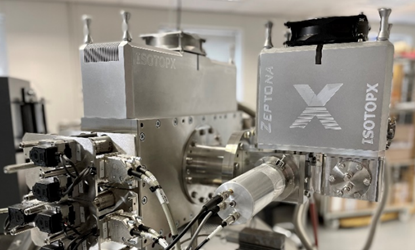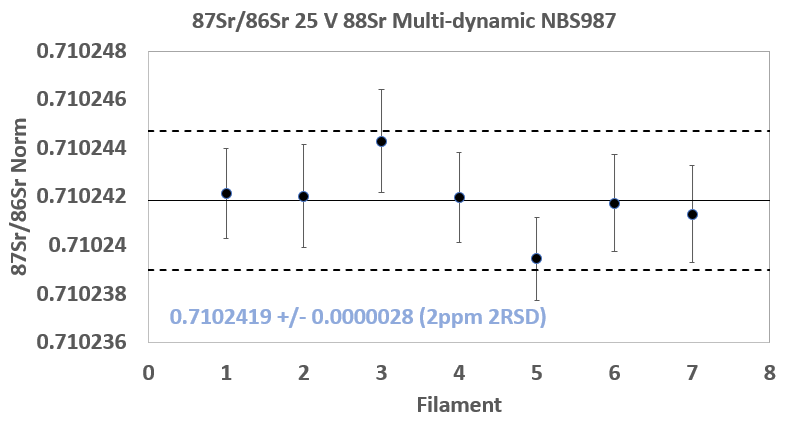So, you have a need for precise isotope ratio measurement of solids, most likely metals, but perhaps you’re early in your career and not yet an expert in the instrumental techniques. You’ve already found out that thermal ionization MS (TIMS) and multi-collector ICP-MS (MC-ICP-MS) are the likely techniques of choice, but which should you choose?
I work for Isotopx, a company the supplies the former and not the latter, so perhaps you’d expect this blog to be far from impartial! But I’ve learned over the years that it’s better to do the right thing and ensure the customer gets the best solution, so I’ll do my best. Keep in mind this is a blog, not a company statement, so a few personal opinions may slip in. Feel free to contact me if you disagree or have additional comments (Stephen.guilfoyle@isotopx.com)
First of all, which came first? TIMS is actually a much older technique, around for several decades before the advent of MC-ICP-MS. As a broad technique, inductively coupled plasma mass spectrometry (ICP-MS) wasn’t widely used until the 1980’s and was around in single collector format, typically using a quadrupole-based technique for mass separation, before multicollector iterations appeared. As an aside, my first experience of MC-ICP-MS was testing and installing Plasma 54 instruments (VG Elemental) in 1998. At that time, it was still a technique in its infancy, though I heard it widely stated that MC-ICP-MS would totally replace TIMS in the long term. Nearly 25 years later, has that happened? Of course not! Let’s explore why.
There are a number of factors that will influence your choice of these two techniques, including experience, precision requirements, throughput, sample type, requirement for spatial resolution, availability of sample preparation resources, operating budget, and many more.

Let’s look at some of the reasons you might select MC-ICP-MS. Two of the key benefits of this technique are flexibility and speed. I remember installing an MC-ICP-MS in a lab outside of New York City, and the scientists using the instrument for the first time (previously TIMS users) were absolutely amazed that they’d been able to try four isotope systems by the end of the first day! One of the main reasons for this is the hugely simpler sample preparation. ICP-MS instruments most commonly analyse samples in a dilute acid matrix, and for some sample types, the sample preparation is simply a case of diluting the sample to a suitable concentration to enable measurement (side note: I realize this enormously trivializes sample preparation – a potentially very complex operation – but it’s undisputed that typically it’s easier than TIMS sample prep).

Sample analysis is also typically quicker, you’re taking data within moment of sample being drawn from the solution bottle, and for many isotope systems you can achieve moderate to good precision within a matter of ten to twenty minutes. And you can change from one sample to another in seconds… and keep changing all day long, there’s no turret to load and evacuate before analysis.
Easier sample prep and fast analysis means that if throughput is your main requirement, MC-ICP-MS is likely to be on top of your list. And aside from the easier sample prep, MC-ICP-MS as a technique can be used for more elements than a TIMS – enhancing its flexibility.

Another relative benefit of MC-ICP-MS is the ability to make measurements of specific areas of your sample, in other words you can take spatially resolved data. This is best achieved using laser ablation as the sample source, something that has become highly evolved over the last 20 years, although it was not commonly used when I first worked with MC-ICP-MS. In practice this means you can select a specific part of your sample, a single grain for example, down to the scale of tens of microns, and achieve relatively high precision for just that sample. It’s ideal for heterogeneous samples. Doing the same task using TIMS means complex sample preparation involving micro-milling and a level of dexterity beyond mine!
But what about the downsides? One major fly in the ointment is running costs. MC-ICP-MS instruments consume large quantities of argon gas; used to transport the sample, enable the plasma, and cool the sample introduction system. This is a costly gas, so operating such an instrument full time costs many thousands if not tens of thousands of dollars a year. This can be prohibitive for some labs that can achieve capital funding but struggle with large running costs. These instruments also require significantly more electricity to operate than TIMS instruments, mainly due to the power-hungry RF generator. Increasing energy costs in some parts of the world make this more of a factor in recent times.
There’s also the issue of ultimate precision. As a technique, MC-ICP-MS precision is predominantly precision limited by the inherent variability in the ion beam signal due to instabilities in the mass bias (which itself is larger than for TIMS instruments). Operators of both techniques will be very familiar with the almost noise-free sample intensity measurement when using a TIMS instrument, compared to the relatively noisy, flickering intensity measurement from an MC-ICP-MS in use. This is not much of an issue for a single collector ICP-MS technique where precisions are at the low percent level. But for isotope ratio measurements it becomes significant, and is the primary reason why many of the highest precision isotope ratio measurement data still comes from TIMS instruments, this being an example from our own TIMS instrument: (https://www.isotopx.com/resources/2ppm-reproducibility-of-87sr-86sr-achieved-using-the-phoenix-tims).
OK, so we’ve looked at some of the upsides and downsides of MC-ICP-MS. When would you choose TIMS? Taking a step back, you can probably deduce that for flexibility and throughput, MC-ICP-MS has an awful lot to offer, the same applies if you must have spatial resolution of your samples. But TIMS comes into its own if you really want the best precision for your precious samples. If you’re already a TIMS user, you won’t be put off by the sample preparation requirements.
And there are some elements where the higher ionization efficiency when using TIMS means that the ion yield (in other words, how many ions you get unit amount of stuff you put in the mass spec) can be better for TIMS than MC-ICP-MS. NdO is a good example of this. The highest precision published Nd data is usually measured on TIMS.

There’s also the issue of familiarity and training. TIMS instruments are technically less complex than MC-ICP-MS instruments, being both easier to use and easier to maintain. If your lab has experience TIMS users, then a switch to MC-ICP-MS can be time consuming due to the learning curve required for ICP as an ion source.
And of course we mentioned running costs. If these could be a limiting factor for a laboratory then TIMS may be a preferable solution. In the days when I travelled around the world installing and maintaining MC-ICP-MS instruments, it was fairly common to see an MC-ICP-MS instrument inoperative due to either expensive maintenance issues beyond the budget of the lab or simply the inability to afford the argon gas. Yet in these same labs the old TIMS instrument just kept on working.
So, what’s the take-away? The best-funded labs often have both instrument types! But if you can’t afford that, then answering a few simple questions about throughput requirements, precision requirements, sample preparation capability and available budget for running costs should help to point you in the right direction. Feel free to contact me if you disagree or have additional comments (Stephen.guilfoyle@isotopx.com).
